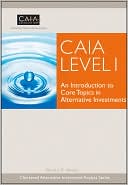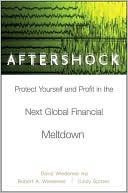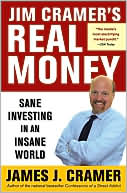CAIA Level I: An Introduction to Core Topics in Alternative Investments
Search in google:
Success in today's complex world of alternative investments (AI) demands a strong foundation of knowledge and an unwavering dedication to professionalism. But up until a few years ago, no structured program existed to address these needs.Sponsored by the CAIA Association®, the Chartered Alternative Investment Analyst (CAIA) designation is the only educational standard uniquely designed for individuals specializing in alternative investments. Covering hedge funds, real estate, private equity, commodities and managed futures, and credit derivatives, the CAIA charter demonstrates one's commitment to professionalism and command of AI's unique fundamentals—setting you and your firm apart from the competition.The CAIA program is comprised of a two-tier exam process (Level I and Level II) through which you may earn the CAIA charter. The Level I exam challenges your understanding of the alternative investment market's tools and terms, and tests your knowledge of various trading strategies and their performance characteristics.CAIA Level I: An Introduction to Core Topics in Alternative Investments contains virtually all the material on alternative investments a potential Level I candidate would need to know as they prepare for the exam. The information found here will help you build a solid foundation in alternative investment markets—for example, the characteristics of the many types of strategies within each alternative asset class, and how statistics are used to measure investment performance on a stand-alone basis as well as in a portfolio context. A required reading for one of today's most demanding exams, this comprehensive resource:Uses investment analytics to examine each alternative asset classFocuses on quantitative techniques used by investment professionalsAddresses the unique attributes associated with the alternative investment spaceOffers a study guide outlining learning objectives and keywords, available at www.caia.org/program/studyguidesSince its inception in 2002, the CAIA program's diverse curriculum has benefited a wide array of individuals—from institutional investors, investment advisors, AI fund managers, and administrators to accountants, lawyers, and academics. So if you're ready to take your first step toward the CAIA charter, take the time to understand the insights offered here.Don't forget to pick up CAIA Level II: Advanced Core Topics in Alternative Investments to prepare for the second, and final, exam needed to achieve the CAIA charter.THE CAIA ASSOCIATION is an independent, not-for-profit, global organization committed to education and professionalism in the field of alternative investments. It offers two exams (Level I and Level II) to professional analysts in this growing field so that, upon successful completion, the individuals hold the Chartered Alternative Investment Analyst (CAIA) designation. This certification has a great deal of prestige in the global community with members from over sixty countries.
Preface. Part I: Introduction to Alpha Drivers and Beta Drivers. Chapter 1: What Is an Alternative Asset Class? Chapter 2: Why Alternative Assets are Important: Beta Drivers and Alpha Drivers. Chapter 3: The Beta Continuum. Classic Beta, Bespoke Beta, Alternative Beta, Fundamental Beta, Cheap Beta, Active Beta, and Bulk Beta. Chapter 4: Alpha vs. Beta Separation in the Asset Management Industry. Chapter 5: The Calculus of Active Management. Part II: Real Estate. Chapter 6: Real Estate Investment Trusts. Chapter 7: Introduction to NCREIF and the NCREIF Indices. Chapter 8: Real Estate as an Investment. Chapter 9: Core, Value Added and Opportunistic Real Estate. Part III: Hedge Funds. Chapter 10: Introduction to Hedge Funds. Chapter 11: Establishing a Hedge Fund Investment Program. Chapter 12: Due Diligence for Hedge Fund Managers. Chapter 13: Risk Management Part 1: Hedge Fund Return Distributions. Fixed Income Yield Alternatives. Chapter 14: Risk Management Part II: More Hedge Fund Risks. Chapter 15: Hedge Fund Benchmarks and Asset Allocation. Chapter 16: Hedge Fund Incentive Fees and the “Free Option”. Chapter 17: Hedge Fund Collapses. Chapter 18: Top Ten Hedge Fund Quotes. Part IV: Commodities and Managed Futures. Chapter 19: Introduction to Commodities. Chapter 20: Investing in Commodity Futures. Chapter 21: Commodity Futures in a Portfolio Context. Chapter 22: Managed Futures. Part V: Private Equity. Chapter 23: Introduction to Venture Capital. Chapter 24: Introduction to Leveraged Buyouts. Chapter 25: Debt as Private Equity Part I: Mezzanine Debt. Chapter 26: Debt as Private Equity Part II: Distressed Debt. Chapter 27: Trends in Private Equity. Chapter 28: The Economics of Private Equity. Part VI: Credit Derivatives. Chapter 29: Introduction to Credit Derivatives. Chapter 30: Collateralized Debt Obligations. Chapter 31: Risks and New Developments in CDOs. Appendix A: Basic Principles of Return and Present Value. Appendix B: Measures of Risk and Risk Management. Appendix C: Correlation and Regression Analysis. Appendix D: The Quantitative Analysis of 130/30 Products. About the Author. Index.








